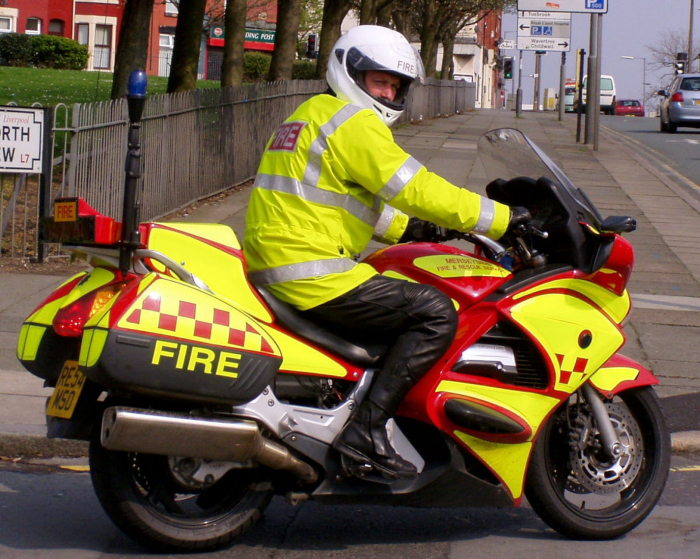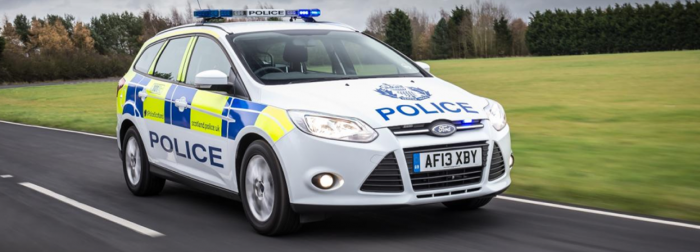Handling emergency vehicle situations
Imagine for a moment that you’re driving in a big city for the first time as a newly-qualified driver, maybe in the biggie, London, or in another pretty large city like Manchester or Birmingham. With bus lanes, no entry signs, one way systems, large junctions and car park entrances to spot, taxis absolutely everywhere and people often crossing the road at random, driving in a city can be nerve-racking even for experienced drivers, but especially for rookies. Suddenly, to add to the experience, you see and hear an ambulance looming up behind you in the rear-view mirror.

Emergency vehicle situations are enough to give many drivers a ‘heart-in-mouth’ feeling, whether in built-up areas, on narrow country lanes or anywhere else for that matter. There’s a balance between keeping road users and pedestrians safe while allowing an accident or incident to be attended as quickly as possible. By thinking scenarios through in your mind first and remembering tips and advice like this, though, it’s possible to keep calm and not be phased by ‘blue light’ vehicles.
Different types of emergency vehicles
Ambulances, police cars, fire engines and motorbikes with blue lights only represent a fraction of emergency vehicles, even if they’re the most common. Blue flashing lights are also used by a variety of other organisations from HM Coastguard, the Forestry Commission and HM Revenue and Customs, to bomb disposal, nuclear emergency, blood delivery and cave and mountain rescue vehicles.

Anyone who drives on motorways a lot will have seen Highways England vehicles, usually 4x4s, which are fitted with flashing amber lights. This orange colour is also used by VOSA, by breakdown and recovery providers, slow-moving vehicles including abnormal or wide loads along with their escort vehicles, by road-sweepers, bin trucks and other council vehicles, plus ones involved in testing, measuring and surveying.
Green lights are used on some doctors’ vehicles – and yes, unmarked emergency vehicles also use sirens and flashing lights, which tend to be less obvious, built into the front grille and rear window.
Listen, look, think, react: being alert pays off
Drivers tend to panic more when they only notice an emergency vehicle at the last minute, when it’s breathing down on their rear bumper. By thinking ahead and being aware and observant when driving, you’ll hear sirens and see flashing lights much earlier, giving you more time to react. Looking at how other road users are responding, using your mirrors regularly and keeping the volume of music down are great tips, especially in built-up, busy or unfamiliar areas.
Top tips for emergency vehicle situations
Stay calm and don’t panic, as the Highway Code says in Rule 219. Police, ambulance and other emergency services drivers are specially trained to deal with all kinds of situations. They will only pass you when it’s safe and will never make you do anything dangerous or illegal.
Reduce distractions by switching music off and putting conversations on hold, for example.
Look around you and think about what the emergency vehicle is likely to do to get through. If nearby road users have created sufficient room, you might not need to do anything.
Avoid braking sharply, as this could cause the vehicle(s) behind to swerve or even crash, particularly if you’re approaching a junction or roundabout.
Use your indicators to clearly tell other road users what you are doing.

Pull over on the left if and when it’s possible to do so safely. Try to avoid mounting a kerb or grass verge, as this could damage your car and, more importantly, endanger pedestrians.
Continue driving until a suitable stopping place comes along, if necessary. Stopping on a bend, on the brow of a hill, on narrow roads or next to parked cars could put you and others in danger.
Don’t break road laws when an emergency vehicle approaches. Jumping a red light, driving on the wrong side of the road, breaking the speed limit, driving in a bus lane and stopping on yellow hatch markings are still illegal.
On one-way streets, some with bollards on either side, the only option is probably to continue driving at the legal speed limit until an opportunity comes along for the emergency vehicle to safely pass you.
On motorways, move over to the inside lane as soon as you can do so safely and smoothly, using your mirrors and indicators like you normally would. If there is one, avoid blocking or stopping on the hard shoulder.
Stay alert and keep checking your mirrors after the emergency vehicle(s) you are aware of have driven past, because more could be on the way to the same incident.
Emergency vehicle situations can even spook experienced drivers from time to time, but by keeping tips and advice like the above in mind, they can be made much less stressful to deal with.